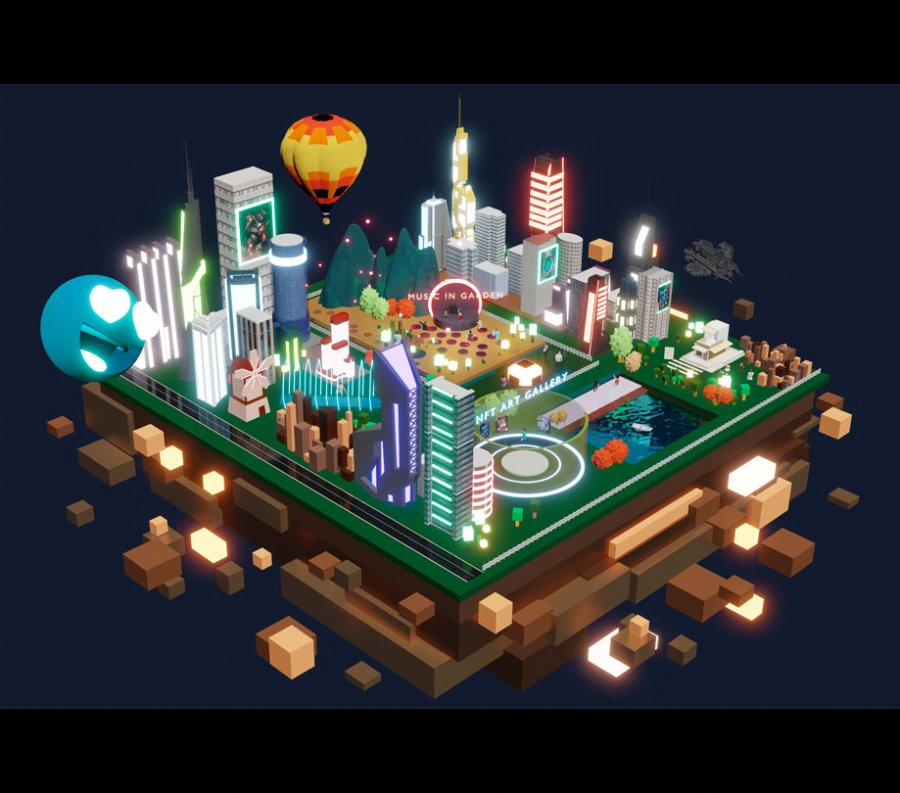Easy NFT creation with Enjin
Esther Partland from Enjin discusses her journey at Enjin and how she started as a volunteer and progressed to Ecosystem Manager. Esther also identifies the key skills that led to her success at Enjin, what kind of tools Enjin offers for building Web3 infrastructures, and how businesses and individuals can both benefit from these tools. Esther goes on to explain the role of Web3 digital assets in games, what the look and feel of a gaming metaverse on Polkadot will consist of, and how Enjin lays the foundation for a decentralized metaverse, but will be in a state of continuous development due to to the nature of the blockchain. We also asked her about interoperability, what it is, and how Enjin will support its ecosystem of partners with their blockchain-based gaming experiences. Finally, she explains why Enjin chose Polkadot, some everyday use cases of NFTs that the average internet user can appreciate, plus how to start your journey building and using NFTs with Enjin.
ADM: Tell us about yourself and how you were first introduced to the crypto and NFT world.
Delland: In 2014 I discovered Enjin and at the time I thought it was similar to a mini Facebook or forum for gaming enthusiasts. Players from several titles, such as World of Warcraft or Minecraft, used to join the Enjin network from around the world to discuss tactics and trading strategies. Immediately I felt a connection to the ecosystem and became part of the community. Over time I started volunteering so I could get more involved. As Enjin developed in the blockchain industry, my role in the project became more significant. Since then, I’ve been able to progress through the ranks, foster connections with both individual community members and business partners, and eventually become a leader of the ecosystem.
ADM: What have you identified as the key skills that lead to success at Enjin?
Delland: Getting to this position involved several stages, with a combination of good timing and dedication. I joined Enjin’s ranks right around the time that the core suite of products was being built, such as the wallet and software development kits. The community needed support, and luckily I was able to contribute. The opportunity gave me the chance to practice different languages that I was studying at the time, so it was a positive feedback loop. Although luck and timing played a strong hand, I believe the skills most needed for this project and the industry are persistence and commitment to helping members of the Enjin community.
ADM: Enjin provides the tools to build Web3 infrastructure. Are these tools more beneficial to individuals or businesses?
Delland: Fortunately, in this case, it’s a mix of both. We have significant global brands such as Microsoft using our tools for their Azure Hero program, and we recently partnered with the massively multiplayer online role-playing game (MMORPG), Entropia Universe. In addition, we support independent projects such as Lost Relics, Kingdom Karnage and MyMetaverse. There is even a project to gamify tourism with non-fungible tokens (NFT), called New Frontier. There are many different types of use cases, and Enjin’s ecosystem portfolio reflects this diversity. Enjin’s tools are aimed at making life easier for less experienced developers, and we want to ensure that those unfamiliar with blockchain technology can use the product suite. This strategy is how we built up our first wave of almost 50 users throughout 2018 and 2019.

ADM: What place do Web3-enabled digital assets have in games?
Delland: Older platforms generate unimaginably large amounts of data. These platforms have done a great job of making the average user believe their personal data is arbitrary, while actively using it for profit. For example, if you haven’t updated your phone and then lose saved photos or saved data, you just move on because that’s how the system is set up. Blockchain technology allows users to organize their data in a way that is not possible on older online platforms. You don’t have to accept that loss with Web3. In-game skins, loot, or even save data represent the time and effort invested. Switching platforms or devices shouldn’t mean losing your hard work.
Abstract digital assets can and do have sentimental value, and in my experience players are often the most attached to digital objects, so it makes sense to put these bundles of code into an immutable database. More importantly, interoperable NFTs set up the much-desired cross-platform compatibility that gamers have always dreamed of.
ADM: What does the future look like for a gaming metaverse built on Polkadot?
Delland: This is a great question and something that many developers and strategists are exploring right now. Just like in the early days of the internet, blockchain technologists everywhere are experimenting with many tools and concepts. At Enjin, we are laying the foundation for a decentralized metaverse, which by its very nature will be in a state of continuous development. Data sovereignty and personal autonomy will remain constant. The metaverse is still in its infancy, so I’m grateful that Enjin gets to be at the heart of it. We drive innovation and lower the barriers to entry, not just for game developers, but for anyone interested in experiencing and interacting within a decentralized universe.
ADM: Interoperability is taken for granted on Web2. Can you explain how Enjin supports its ecosystem partners in building interoperable, blockchain-based gaming experiences?
Delland: Interoperability is a feature that gets overlooked because it has always been there for today’s web users, making it a bit of a given. The decentralized metaverse that we build on Enjin is about ease of use and portability. Therefore, sharing digital assets and data from one chain to another is important.
Efinity, a cross-chain highway bringing NFTs to Polkadot, launched in March and we’ve been bringing our users along ever since. We are creating extensive documentation, syncing one-on-one for guidance and support, and will soon be launching classroom seminars to educate our users. All these resources are aimed at streamlining the integration of Efinity. How this relates to my role is the process of effectively orchestrating it all. I also gather feedback from the various ecosystem partners so that we can implement their suggestions into the Efinity structure and ensure that the community feels heard.
ADM: Why did Enjin choose to build with Polkadot and does this mean a move away from Ethereum?
Delland: Given that Enjin’s products reside on the Ethereum mainnet, we needed to build on the infrastructure that has Ethereum Virtual Machine (EVM) compatibility. As the flagship project of the Web3 Foundation, the main relay chain of Polkadot already offers interoperability and is complementary to the Ethereum ecosystem. Polkadot is also far more favorable to players’ needs. At Efinity we can subsidize the gas fees for users while delivering the high level of performance expected in games.

ADM: What are some everyday practical use cases of non-fungible tokens (NFTs) that the average internet user can appreciate?
Delland: NFTs can come in all shapes and sizes. They can be in the form of art, music, memes, collectibles, or really anything imaginable. Microsoft uses Enjin NFTs in the Azure program and provides the opportunity to run hackathons or courses with its users. Upon completion, users receive a unique verification badge, called a badger, which also comes with the option to receive a physical plushie. These verification badges are distributed using our QR code service, Beam. Some more obvious examples of in-game items that can be tokenized include game skins and personal avatars. Another application we are exploring at Enjin is audio NFTs, which allow artists to transform their sound and generate new revenue streams. The use cases for NFTs are endless!
ADM: How can individuals start their journey with easy NFT creation and use of NFTs from Enjin?
Delland: Getting started with Enjin is as easy as downloading our wallet. This gives everyone access to the Enjin platform, which contains our application programming interface that makes it easy to manage and create tokens. For the creative and curious, Enjin Playground is available to start integrating the power of blockchain. Finally, for anyone looking for inspiration, our ecosystem projects are on display at the Enjin exhibition. Otherwise, our ecosystem team is always open to meeting new people. Get in touch on our Twitter or Discord channel and let’s start building together!

Esther Partland
Esther Partland is head of ecosystem at Enjin. She started working with Enjin in 2016 as a translator, speaking English, Spanish and Hungarian. Esther has been instrumental in building Enjin’s translation team, with Enjin products now localized in over 25 languages. Esther’s duties then expanded her role to manage the customer support team and the quality assurance team where she ensured robustness for product launches and updates.
Currently, Esther now leads the Ecosystem team at Enjin, overseeing the growth and onboarding of new users to the Enjin ecosystem.
Esther’s role at Enjin complements her passion for NFTs. She started making and minting her own NFTs in 2018. Esther uses social channels to educate the public about crypto, blockchain and the Metaverse.
Subscribe to App Developer Magazine for just $5.99 a month and take advantage of all these benefits.

